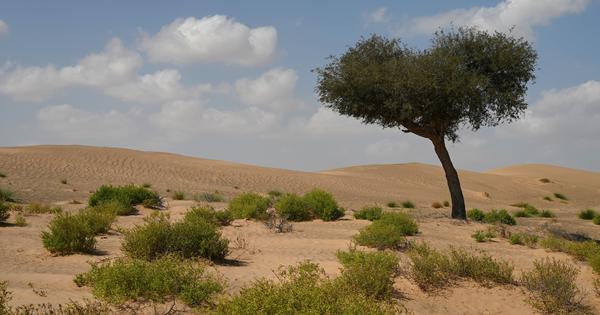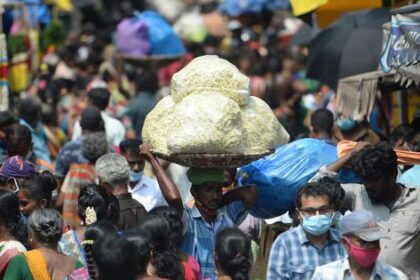The impact of solar energy and mechanised farming threatens the survival of the khejri tree in Rajasthan.
The khejri tree (Prosopis cineraria), a vital part of Rajasthan’s ecosystem, is facing significant challenges due to various factors. Once a staple of the Thar desert, it has long been regarded as the lifeline of Western Rajasthan. The tree thrives in the region’s hot and dry climate, producing bean-like sangri pods that are a source of food and income for local farmers. However, in recent years, its presence has dwindled considerably due to the expansion of solar plants, mechanised farming practices, and the adverse effects of climate change.
In Osian tehsil of Jodhpur district, farmer Tiloka Ram Godara recalls a time when his fields were home to 20 to 25 khejri trees. He explains that these trees were once crucial for sustaining his family’s livelihood, particularly during the monsoon season when sangri pods were a primary food source. With the advent of more reliable water supplies, farming has transformed, allowing for multiple harvests throughout the year and diminishing the reliance on khejri pods.
Inder Nath, a resident of Junjala village in Nagaur district, echoes similar sentiments. Managing around 100 bighas of land, he used to have several khejri trees. However, gypsum mining in the area has led to the loss of many trees, drastically reducing the availability of sangri. The mining activities have had a devastating impact on the local ecosystem, as mining companies do not replace the trees they remove. With the number of mineral leases soaring—from just 5,713 in 1960-61 to over 33,000 in 2014-15—the destruction of khejri trees has accelerated.
Rajasthan is also experiencing a rapid increase in solar energy production, which has become a significant part of the state’s economic strategy. With an installed solar capacity of over 29,500 MW, the government aims to ramp this up to 90,000 MW by 2029-30. However, this expansion comes at a cost. Reports indicate that around 2.5 million trees, primarily khejri, have been cut down in the last 14 years to accommodate solar energy infrastructure.
Experts have raised concerns about the ecological ramifications of these developments. Anil Kumar Changani, from the Department of Environment at MGM University, highlights that the installation of solar plants often leads to the complete clearing of vegetation, including essential desert species like khejri. The loss of these trees not only affects biodiversity but also the livelihoods of local communities that depend on them for various resources.
In 2022, the National Green Tribunal acted against a solar energy company for illegally cutting down khejri trees, mandating the planting of ten times more trees as compensation. The khejri tree provides a multitude of ecosystem services, including fodder for livestock, wood for construction, and natural fertilization of the soil. However, the changing climate, characterized by erratic rainfall patterns and increased moisture, poses additional threats. Farmers are now facing new challenges, such as the emergence of pests that hinder the production of sangri.
The situation has prompted calls for greater protection of the khejri and native vegetation. Activists and environmentalists are advocating for stricter regulations on tree cutting and a commitment from companies to contribute to reforestation efforts. As the khejri tree continues to decline, the future of this integral part of Rajasthan’s rural economy hangs in the balance, highlighting the urgent need for sustainable practices that honor both development and ecological preservation.








